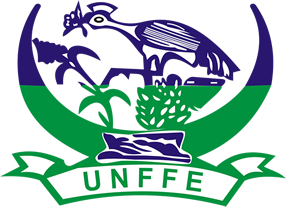Introduction.
Livestock farming is a vital component of Uganda’s agricultural sector, contributing significantly to the nation’s economy and rural livelihoods. Over the years, the development of livestock farming in Uganda has seen substantial progress, driven by various government initiatives, private sector involvement, and international support. This article delves into the current state of livestock farming in Uganda, the advancements made, the challenges faced, and the future prospects of the sector.
Progress and Prospects.
The diversity of livestock reared in Uganda includes cattle, poultry, goats, sheep, and pigs, each playing a crucial role in food security, income generation, and socio-cultural practices.
The Importance of Livestock Farming.
Livestock farming is integral to Uganda’s agricultural economy, contributing about 9% to the national GDP and supporting approximately 58% of rural households. The sector provides a variety of products, including meat, milk, eggs, hides, and manure, which are essential for both domestic consumption and export. Additionally, livestock serves as a source of financial security and social status in many communities.
Major Livestock Types;
Livestock farming in Uganda is diverse, encompassing cattle, poultry, goats, sheep, and pigs.
1. Cattle Farming
- Dairy Cattle: Uganda has a thriving dairy industry, with regions like southwestern Uganda being prominent for milk production. Dairy farming provides milk and milk products such as cheese, yogurt, and butter.
- Beef Cattle: Beef cattle are reared mainly in the cattle corridor stretching from the northeastern to the southwestern parts of Uganda. Beef production is crucial for both domestic consumption and export.
2. Poultry Farming
- Chicken: Poultry farming is widespread, with both broilers (for meat) and layers (for eggs) being raised. It is a significant source of protein and income for many households.
- Other Poultry: Ducks, turkeys, and guinea fowls are also reared, contributing to the diversity of poultry products available.
3. Goat and Sheep Farming
- Goats and sheep are reared for their meat, milk, and wool. They are particularly important in arid and semi-arid regions due to their resilience to harsh conditions.
4. Pig Farming
- Pig farming is growing rapidly in Uganda, driven by high demand for pork. Pigs are reared mainly in central and western Uganda, providing a quick return on investment due to their fast growth rates.
The Current State of Livestock Farming.
Livestock farming is integral to Uganda’s agricultural economy, contributing about 9% to the national GDP and supporting approximately 58% of rural households. The sector provides a variety of products, including meat, milk, eggs, hides, and manure, which are essential for both domestic consumption and export. Additionally, livestock serves as a source of financial security and social status in many communities.
Key Developments in Livestock Farming.
Several key developments have marked the progress of livestock farming in Uganda:
1. Improvement of Livestock Breeds
- Cross-Breeding Programs: The introduction of cross-breeding programs has resulted in improved breeds that offer higher productivity. For example, cross-breeding indigenous cattle with exotic breeds has enhanced milk and meat production.
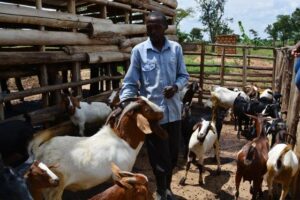
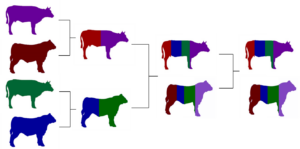
- Artificial Insemination: The use of artificial insemination has increased the efficiency and success rate of breeding programs, leading to better quality livestock.
2. Disease Control and Veterinary Services
- Vaccination Campaigns: Nationwide vaccination campaigns against prevalent diseases such as foot-and-mouth disease, Newcastle disease, and African swine fever have significantly reduced livestock mortality rates.
- Veterinary Infrastructure: The establishment of veterinary clinics and mobile veterinary services has improved access to animal healthcare, ensuring timely treatment and disease prevention.
3. Feed and Nutrition
- Feed Production: Efforts to promote local feed production, including the cultivation of fodder crops and the use of crop residues, have mitigated feed shortages and improved livestock nutrition.
- Supplementation Programs: Introduction of feed supplements has enhanced the nutritional intake of livestock, leading to better growth and productivity.
4. Water Management
- Water Harvesting Techniques: The implementation of water harvesting and conservation techniques, such as rainwater harvesting and construction of water reservoirs, has ensured a reliable water supply for livestock, particularly during dry seasons.
5. Capacity Building and Extension Services
- Training Programs: Extensive training programs for farmers on best practices in livestock management, disease control, and nutrition have equipped farmers with the knowledge and skills necessary for effective livestock farming.
- Extension Services: Strengthening of agricultural extension services has provided farmers with continuous support and access to vital information.
6. Market Access and Value Addition
- Infrastructure Development: Improvements in market infrastructure, including the establishment of abattoirs, processing plants, and cold storage facilities, have enhanced the marketing and value addition of livestock products.
- Cooperatives and Associations: Formation of cooperatives and farmer associations has facilitated collective marketing, improved bargaining power, and access to better prices.
Challenges in Livestock Farming;
Despite the progress, livestock farming in Uganda faces several challenges:
1. Disease Outbreaks
- Persistent outbreaks of livestock diseases pose a significant threat to animal health and productivity.
2. Climate Change
- Changing weather patterns and increased frequency of droughts affect pasture availability and water resources, impacting livestock health and production.
3. Limited Access to Finance
- Many farmers face difficulties in accessing affordable credit, which restricts their ability to invest in improved livestock breeds, feeds, and infrastructure.
4. Inadequate Infrastructure
- Poor road networks and lack of adequate market and processing facilities hinder efficient marketing and distribution of livestock products.
5. Technical Skills and Knowledge
- Limited technical skills and knowledge among farmers regarding modern livestock farming practices and technologies affect productivity.
Future Prospects:
The future of livestock farming in Uganda holds promising prospects, driven by continued efforts and strategic initiatives:
1. Technological Advancements
- Adoption of modern technologies, such as precision farming, genetic engineering, and digital platforms for market information, can revolutionize livestock farming practices and improve productivity.
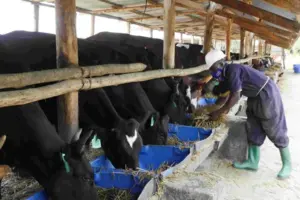
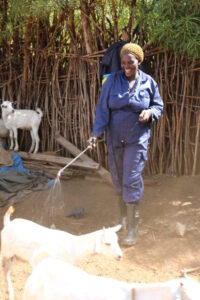
2. Public-Private Partnerships
- Strengthening public-private partnerships can leverage resources and expertise, fostering innovation and investment in the livestock sector.
3. Policy Support
- Implementation of supportive policies and regulatory frameworks can create an enabling environment for livestock farming, encouraging investment and growth.
4. Sustainable Practices
- Promoting sustainable livestock farming practices, including organic farming, integrated pest management, and climate-smart agriculture, can enhance resilience and environmental sustainability.
5. Research and Development
- Increased investment in research and development can lead to the discovery of new and improved livestock breeds, feeds, and disease control methods, driving the sector’s growth.
Conclusion
The development of livestock farming in Uganda has made significant strides, contributing to the country’s economy and improving rural livelihoods. While challenges remain, the continued adoption of innovative practices, supportive policies, and strategic investments can unlock the full potential of the livestock sector. By addressing existing challenges and leveraging opportunities, Uganda can ensure a sustainable and prosperous future for livestock farming, ultimately contributing to national development and food security.






